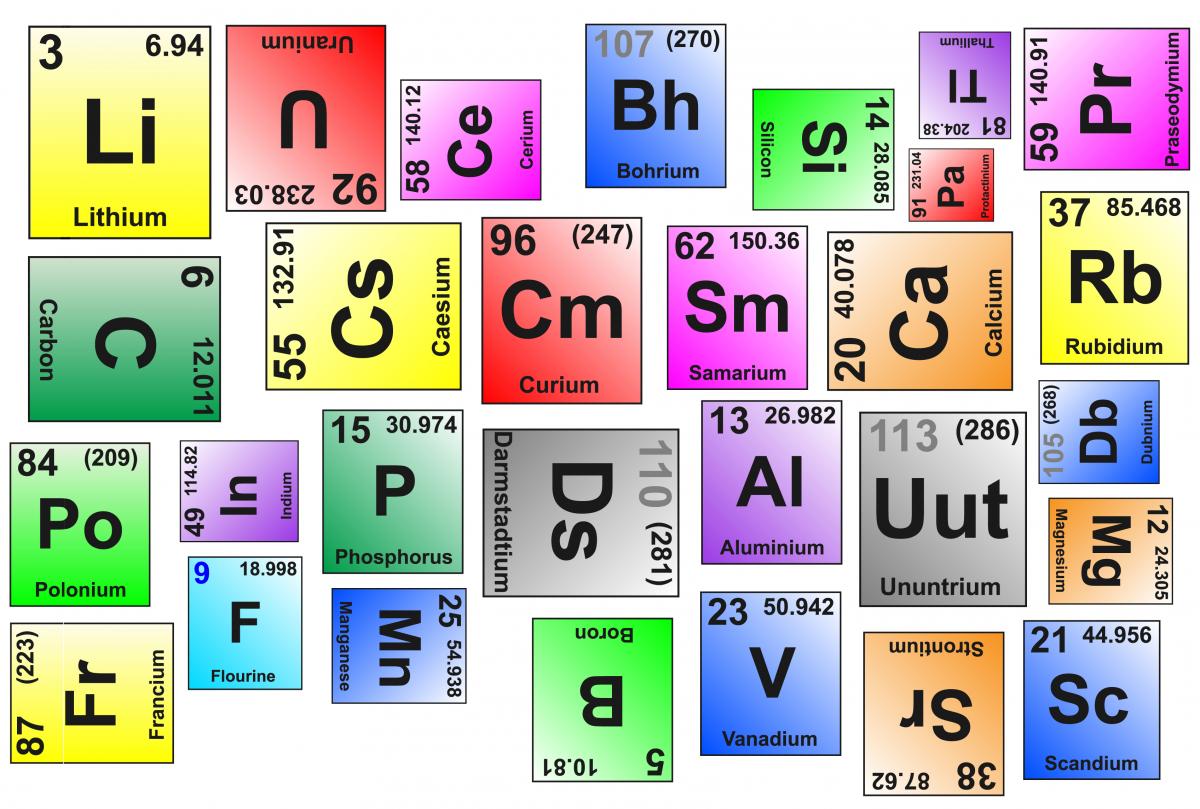Supporting materials
Quiz: elemental pursuit worksheet (Word)
Quiz: elemental pursuit worksheet (PDF)
Download
Download this article as a PDF

How much do your students know about the properties of the chemical elements and how they are used? Find out with this elements quiz, based on articles in Science in School.

As every science teacher knows, the periodic table is a time-tested directory of elements that arranges all known elements according to their atomic number. Very neatly, the periodic table also reveals links and trends between the elements in terms of their physical and chemical properties.
Over the years, Science in School has published a variety of articles that feature many of the elements and how they are used in the sciences, technology and industry. So, to mark the 150th anniversary of the periodic table, we bring you this quiz, which teachers can use to spark discussions about some of the chemical elements, their uses and importance. Students will be able to complete the quiz using only Science in School articles, which are all free to read on the websitew1. The quiz is also available as a downloadable worksheet from the additional materials section.
We hope the quiz will encourage your students to appreciate the huge diversity of the chemical elements and their many fascinating applications. Teachers interested in receiving answers for this quiz – complete with the Science in School source article(s) for each answer – are invited to email us at editor@scienceinschool.org.
1 |
Which dangerous element is used at facilities such as the European X-ray Free-Electron Laser Facility (European XFELw2) to focus X-ray beams? |
2 |
Which transition metal has been used to strengthen samurai swords and tank armour, and is also vital for plant and animal life? |
3 |
Which toxic element is responsible for the vibrant yellows of many Vincent van Gogh paintings? |
4 |
Which element helped Clyde Cowan and Frederick Reines detect neutrinos from radioactive beta decay for the first time in 1956? |
5 |
The only stable isotope of which element is used to define seconds, the standard unit for time? |
6 |
Mixing which element with salt water results in an exothermic reaction that can be used to warm up self-heating meal packs? |
7 |
Which metal with a high melting point is used to line the walls of the Joint European Torus (JET) and ITER nuclear fusion reactors? |
8 |
Which element and its radioisotope allow scientists to study gene regulation and adaptation in long-lived neurons? |
9 |
Which element is essential for the synthesis of thyroid hormones that regulate growth, development and cell metabolism? |
10 |
Atoms of which element were fired into berkelium (element 97) by German scientists to try to create the predicted element 119 (ununennium)? |
11 |
Which trace metal is now rarely used in thermometers because of its toxicity? |
12 |
Which element can be found in computer hard drives and is used in the most powerful permanent magnets known? |
13 |
Which Group 1 metal is commonly found as part of rechargeable batteries in cell phones and laptops? |
14 |
Which element allows scientists to reconstruct past climates based on the ratio of the element’s isotopes in the ‘rings’ of mollusc seashells? |
15 |
Which element is considered a potential energy carrier of the future, and can be released from food waste by microorganisms? |
16 |
‘Doping’ which element with phosphorus or boron can alter its conductivity? |
17 |
Which element is allowed into neurons and muscle cells, in a controlled way, to create an action potential? |
18 |
Which mineral is present at around 5 mg per 100 g of fresh mushrooms? |
19 |
Which element can exit neuron cells via specialised ion channels to restore a resting membrane potential? |
20 |
Ions of which common metallic element are found in Fehling’s solution, used to detect the presence of reducing sugars (fructose, glucose or lactose)? |
21 |
Which element has more stable oxidation states than any other transition metal? |
22 |
NASA uses which inert gaseous element to protect extraterrestrial samples from contamination during investigations? |
23 |
Which element forms free radicals which speed up the reaction that destroys ozone in the stratosphere? |
24 |
Which rare metal took chemists Ida Tacke and Walter Noddack three years to isolate 120 mg of? |
25 |
Which element can be used to thinly coat plastics in order to give them a ‘structural colour’? |
Most school students will encounter the elements of the periodic table every year in their studies. This quiz provides a fun way to remind students about the elements they may already know and helps to extend their knowledge of some of the more common or unusual elements. While researching the answers, students may find material that interests them and thus learn more about the elements.
With 25 questions, teachers can assign one or two a week so the quiz can be used over a term. Alternatively, the whole quiz can be used in a competition among teams of students. The quiz could also be useful as a science club activity or extension task. Teachers can expand on the quiz with additional activities, such as trying to link the different elements together, putting the elements in the quiz into periods and groups or in order of toxicity. Finally, the elements mentioned here can be linked to other disciplines, allowing for cross-curricular uses.
Dr Sue Howarth, science education consultant, UK
Quiz: elemental pursuit worksheet (Word)
Quiz: elemental pursuit worksheet (PDF)
Download this article as a PDF